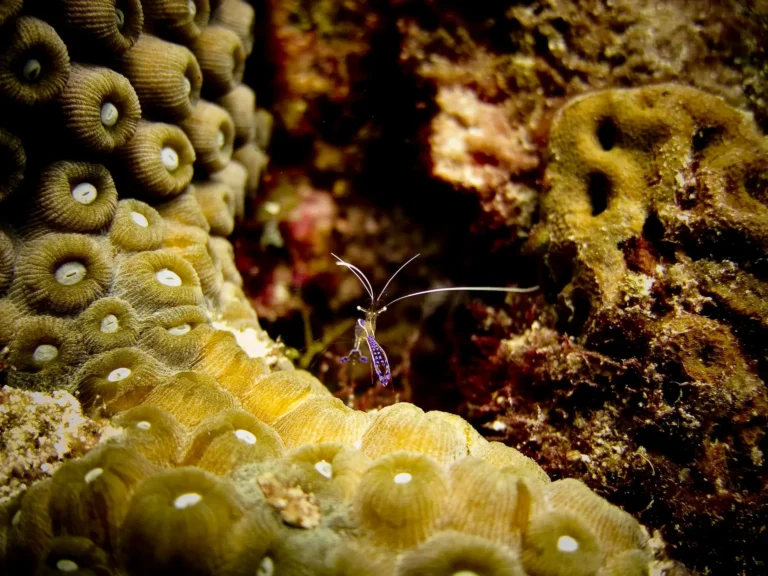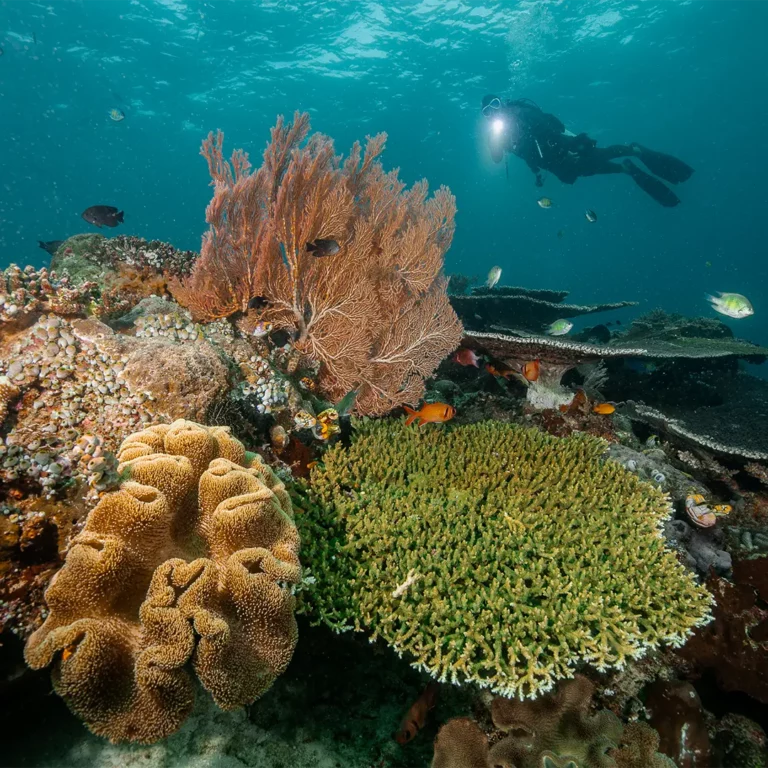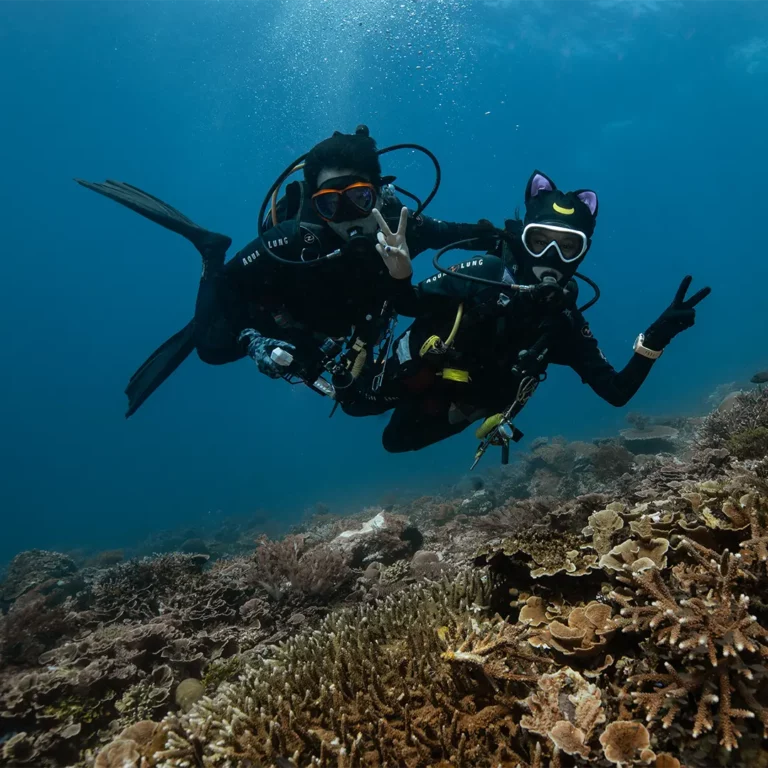Raja Ampat is home to a vast array of marine life and more than 70% of all known coral species worldwide. Schools of fish of various sizes and shapes frequently surround you when you dive in this amazing location. On dive sites like Blue Magic or Cape Kri, where the deeper reefs drop off, and stronger currents draw schools of fish that appear to just float in the currents off the reef, it can almost be an overwhelming spectacle to watch.
Even though there are an infinite number of fish around you, it could be overwhelming to attempt to identify them all. A guide detailing what to do and where to go in this diving paradise has been put together by us below.
On any given dive in Raja Ampat you could find yourself surrounded by fusiliers as you begin your descent. These tiny plankton-eating blue and yellow pelagic fish are typically found in the shallower sections of the reef.
Occasionally, big schools of Red Toothed triggerfish may also be seen darting to the surface and then vanishing once more into the deeper waters. This is particularly prominent in the south of Raja Ampat at sites like Boo Window. Frequently, you can even make out their turbulence and blue forms as they move across the surface. They primarily eat plankton and krill near the water’s surface, much like the fusilier.
Close to the surface, juvenile longfin batfish have also been observed in smaller groups. These inquisitive fish will frequently trail a group of divers as they descend to their destination.
An Abundant Marine Ecosystem with a Wide Variety of Fish
In addition to being a fantastic diving location, Raja Ampat offers divers and snorkelers the chance to see these amazing schools of fish up close. There is the most amazing diving and snorkelling around the local jetties that are close to well-known dive sites. The shallow reefs beneath the jetties are home to enormous schools of Rabbitfish, Batfish, Butterflyfish, and Angelfish, making these sites suitable even for novice snorkelers.
However, there may be numerous schools of fish in Raja Ampat’s shallow waters, but many interesting sights can also be found in the deeper waters. In stronger currents, usually in the canyons between reefs or directly off the reef slope large groups of barracudas congregate and appear to simply hover over the approaching currents. The currents provide easy prey for these opportunistic hunters. Though they make for amazing photos, these schools of barracuda can be frightening when you see their toothy grins.
Numerous pelagic fish can be seen in big schools, in addition to the barracudas that live in the deeper waters. Yellowfin Tuna, Snappers, and Giant Trevally are a few examples.
Generally speaking, the more fish life you are likely to see in Raja Ampat, the stronger the currents are. When diving with qualified professionals, diving in these currents is safe, but one should always abide by the safe diving guidelines. Furthermore, never compromise safety in the hopes of catching a glimpse of a marine creature.
The largest grouper and giant sweetlip schools that are found in Raja Ampat’s deeper waters are the most fascinating fish schools to visit. Groupers have been known to grow much larger even than Giant Sweetlips, which can reach lengths of up to one metre. Both species of fish grow to remarkably large sizes.
For protection from currents and apex predators that also troll the reef system, both species prefer the deeper waters, where they make use of reef structures and rocks. When you swim over a rock formation and spot a gang of twenty giant sweetlips lazily swimming below, it’s quite the sight.
Raja Ampat is a must-visit location for anyone who wants to be completely encircled by the underwater world because of its amazing marine diversity and amazing dive sites.
ALSO READ : Raja Ampat’s Hidden Treasures Dirt Diving and Mud Dives on a Liveaboard Adventure
Sharks in Raja Ampat
Some of the world’s most interesting shark species can be found in this archipelago. Raja Ampat is home to a variety of shark species that provide divers with an exceptional diving experience, including the hammerhead shark, the small, shy Epaulette walking shark, and the curious and striking wobbegong carpet shark.
Manta Rays in Raja Ampat
The majesty of the rays is one of the main draws for divers to Raja Ampat. This region is unique in that some of the black manta rays typically exhibit a fully blackened tone on both their upper and lower bodies.
ALSO READ : The Best Time to Dive Raja Ampat
Sea horses in Raja Ampat
Enjoying the small yet exquisite sea horses is guaranteed when diving in these islands amidst the gorgonians of their sea bed. This area’s primary inhabitants are pygmy seahorses. Thus, up to three distinct species, including Denise, Bargibanti, and Pontohi, may be found.








